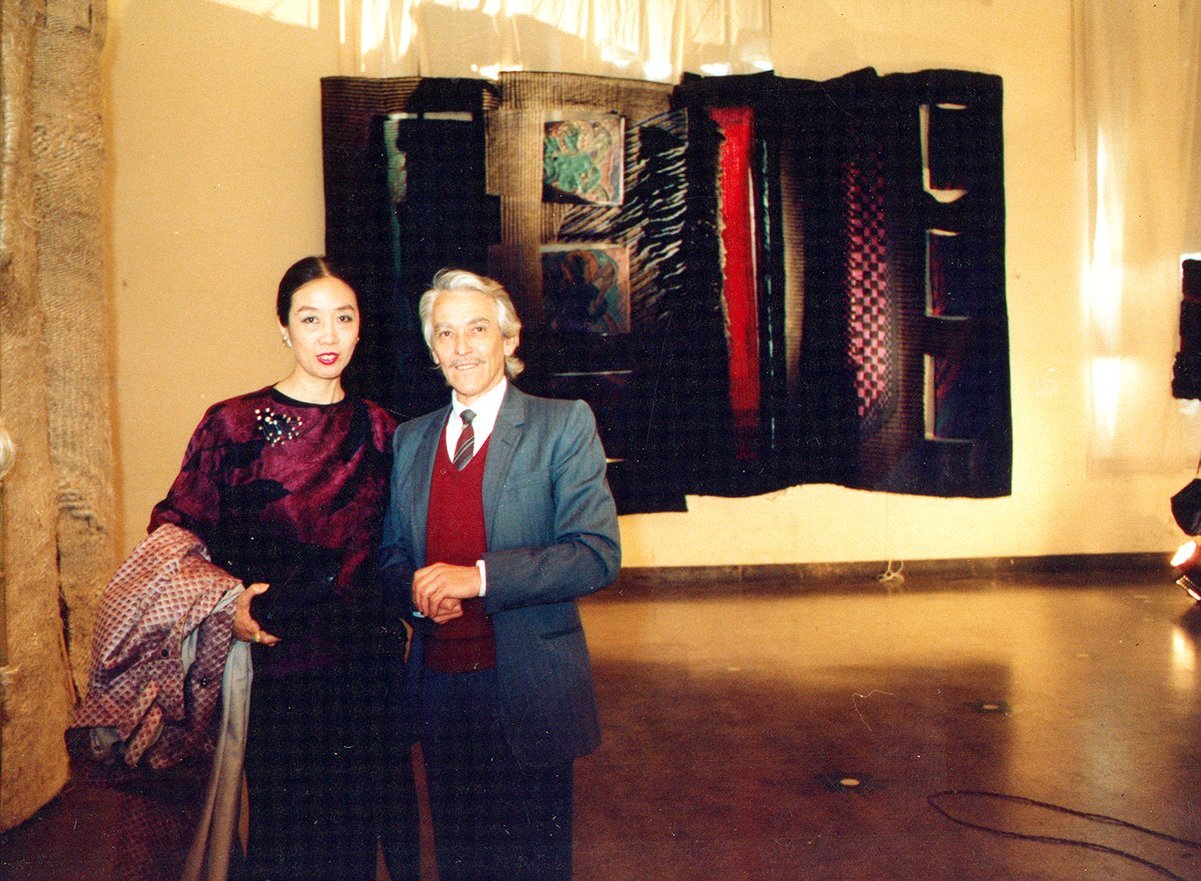As visitors approach the M+ museum from Elements mall, a question posed by a sequence of posters catches their attention: “Who is Madame Song?” The answers sprawled across subsequent posters categorize her as an “Artist. Entrepreneur. Fashionista. Influencer.” To the modern-day observer, these descriptors might fit seamlessly. However, to Song Huai-kuei, who lived from 1937 to 2006, some of these titles might have felt foreign.
M+’s latest exhibition, “Madame Song: Pioneering Art and Fashion in China,” paints her as a beacon of female empowerment, a force to be reckoned with in her times. Yet, her life was intricately entwined with two influential men – her husband, Bulgarian artist Maryn Varbanov, and renowned French fashion designer Pierre Cardin.
Maryn, known for his fabric sculptures, crossed paths with Song in 1954 during his student years in Beijing, where Song was pursuing her studies at the Central Academy of Fine Arts. Their wedding in 1956 marked a significant milestone – the first union between a Chinese national and a foreigner since the inception of the PRC. The couple soon moved to Sofia, and their family grew with the birth of their children, Boryana and Phénix. The exhibition houses a poignant late 1960s artwork by Song titled “Family Portrait.” The image subtly hints at the protective shield the parents seem to cast, though Song’s figure appears somber and distorted.
Throughout her time in Bulgaria, Song often portrayed the enigmatic ‘foreign’ woman in Bulgarian television shows. Concurrently, she draped herself in fabric art, many created in collaboration with her husband. While the exhibition showcases some of her standalone fabric creations and sketches reflecting feminist nuances, labeling her as a pioneer in China’s art realm seems a tad overstated.
Fashion, on the other hand, stood at the brink of a revolution in post-Mao China. In a twist of fate, during a 1980 exhibition of Maryn’s works in New York, Pierre Cardin proposed Song to be the face of his brand in China. This partnership signaled the onset of an era where “Madame Song” became the epitome of fashion, donning Cardin’s unique designs with oversized or sequinned shoulders.
However, despite the abundant display of her Cardin outfits in the M+ exhibition, Madame Song’s essence remains elusive. Fragments of her life emerge through video snippets featuring comments from her children and a brief video of her speech in the mid-2000s. In these pieces, she hints at her role as a facilitator, juggling between representing Cardin’s brand, training models, organizing fashion shows, and managing Maxim’s de Paris in Beijing.
Despite its earnest effort, the exhibition occasionally veers off course, as evidenced by the misplaced inclusion of a video celebrating China’s 2008 summer Olympics bid. Nevertheless, John-Paul Pietrus’ spirited photographs and his film, “Beijing Love,” capture the essence of Song, depicting Chinese supermodel Ling Tan dressed in Song’s iconic Cardin outfits.
By the 1990s, as luxury Western brands forayed into China, Cardin’s once-coveted accessories began losing their sheen. However, the legacy of Cardin and Madame Song persists. M+ offers limited-edition dolls, styled after Madame Song, dressed in Cardin’s iconic designs for HK$4,800 (US$615) for the keen collector.
READ MORE:
